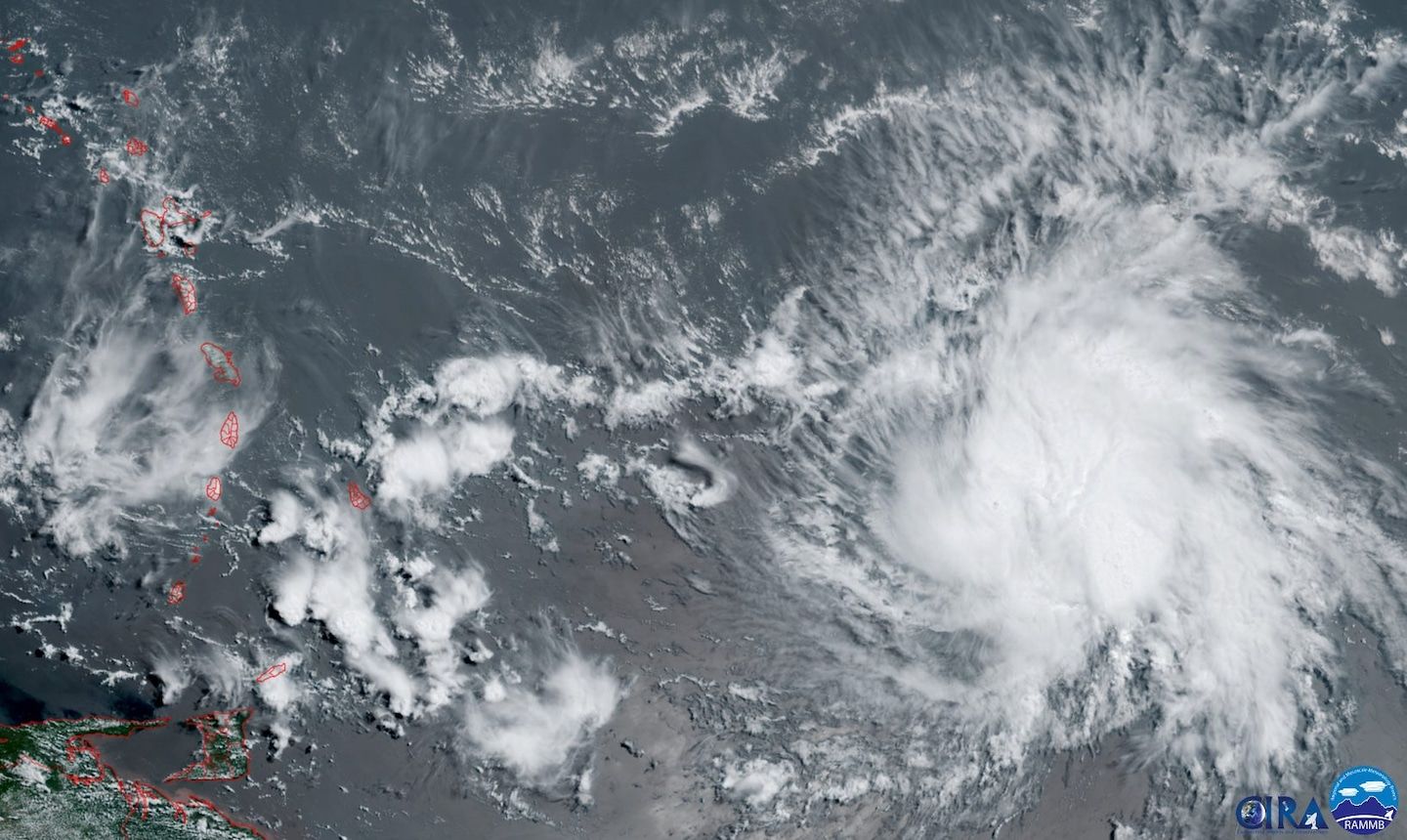Tropical Storm Bret strengthens on approach to Lesser Antilles
Listen 4 min Comment on this story Comment Gift Article Share
Tropical Storm Bret is steamrolling westward on course to strike the Lesser Antilles late Thursday into early Friday. The storm, which developed unusually early in the hurricane season over record-warm waters, is forecast to deliver a potent blow to islands in its path. Wp Get the full experience. Choose your plan ArrowRight On Wednesday, its peak winds strengthened slightly, from 60 to 65 mph.
Tropical storm watches are in effect for Barbados, Dominica and St. Vincent and the Grenadines, which lie in the heart of the arc of volcanic islands at the eastern entrance to the Caribbean Sea. St. Lucia and Martinique are under tropical storm warnings.
Given a forward speed of 15 mph, Bret will pass relatively quickly. Nonetheless, the Hurricane Center notes that Bret will strike “as a strong tropical storm, bringing a risk of flooding from heavy rainfall, strong winds, and dangerous waves along the coast.”
Advertisement
Another well-organized tropical wave trails Bret a few hundred miles to the east. That unsettled mass of clouds and showers appears ready to become a tropical depression or storm over the next few days. The Hurricane Center gives it an 80 percent chance of development and, if it earns a name, will be called Cindy.
It is also organizing unusually far east in the Atlantic for the month of June. Models project that it will track farther north than Bret, probably keeping it over water before eventual dissipation over the open Atlantic next week.
The latest on Bret
Hostile high-altitude winds have limited Bret’s development, but even so, it was a relatively healthy tropical storm late Wednesday. Sustained winds of 65 mph will probably hold steady until the storm enters the Caribbean. It is not forecast to reach hurricane intensity (with winds of at least 74 mph).
Advertisement
The Hurricane Center’s 5 p.m. Eastern advisory noted Bret continued to be influenced by shear, or changing winds with altitude, which was disrupting thunderstorm development enough to prevent rapid strengthening.
The storm is forecast to continue heading westward over the next few days. But wind shear is expected to strengthen in the eastern Caribbean, which is sometimes referred to as a “hurricane graveyard.”
An Air Force hurricane hunter aircraft is scheduled to investigate the storm Wednesday afternoon, which should give a better handle on Bret’s organization and strength.
Where Bret is headed
The Hurricane Center forecasts Bret’s center to pass Barbados Thursday afternoon and then through the main north-south islands of the Lesser Antilles to the west overnight.
Tropical storm conditions extend about 105 miles from the center, so at least 6 to 12 hours of tropical storm conditions are probable where the storm passes and gusty downpours may intermittently last for a full day or so.
Advertisement
Rainfall totals of 3 to 6 inches should be widespread near the path. Some locations could see up to 10 inches of rain, with the highest totals expected in the higher elevations. Flash flooding may occur during heavy and persistent downpours.
Large waves around 25 feet near Bret’s center over open water could be as high as 10 feet or so for much of the leeward side of the Lesser Antilles chain. On islands that encounter the storm’s north side, near-shore waves could reach up to 15 feet and there could be a minor-to-moderate ocean surge, which is a storm-driven rise in water above normally dry land at the coast.
At this point, the main impact for Puerto Rico and islands nearby will probably be large waves and the potential for rip currents Friday into Saturday. Some passing bands of rain and gusty winds are also expected, but the storm will be weakening on its closest pass.
Bret is forecast to dissipate over the weekend as it passes south of Hispaniola and Jamaica while encountering destructive wind shear. Its remnants could still deliver some gusty downpours into Nicaragua early next week.
Gift this article Gift Article
Source: The Washington Post


